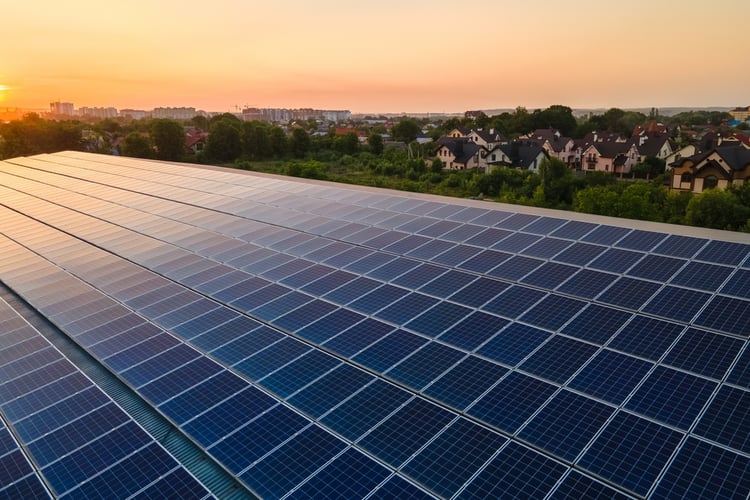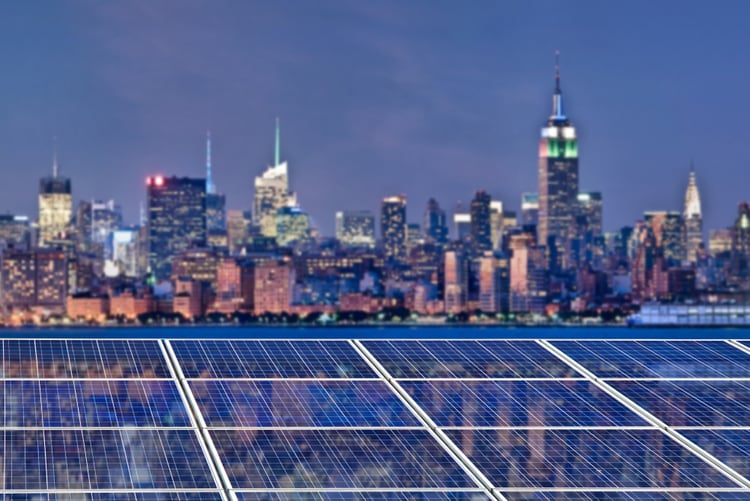Commercial solar energy is a profitable investment in its own right, even before financial incentive programs are considered. Photovoltaic technology costs have fallen by more than 50% over the past 10 years, and the average price of electricity for commercial users in New York now exceeds 20 cents/kWh.
At current technology costs and electricity prices, a commercial solar panel can achieve a payback period of less than eight years without state and federal incentives. While it may seem like a long time, consider that the typical lifespan of quality solar panels exceeds 25 years. The financial outlook improves considerably when you take into account the 30% federal solar tax credit and NYSERDA's NY-Sun Megawatt Block Program .
Qualify for NYSERDA financial incentives with a professional solar PV system project.
Here we will provide two simplified financial scenarios that compare the cash flow of two commercial solar PV systems, with and without the NYSERDA incentive.
NYSERDA Incentive-Free Commercial Solar PV System

Suppose the owner of a commercial building plans to install a 300 kW solar photovoltaic panel and the property is located in Con Edison's service territory. As you can see from the NY-Sun Incentive Dashboards provided by NYSERDA, a system of this size qualifies for a $1.00 per watt incentive starting in November 2022.
The latest edition of the SEIA Solar Market Insight Report (Q3 2022) reported an average price of $1.71/W for commercial solar panels. Based on this figure, a 300 kW system has an estimated price of $513,000. Thanks to the Solar Investment Tax Credit, 30% of this amount ($153,900) can be claimed by the homeowner on their next federal tax return, resulting in a net cost of $359,100.
Under favorable local conditions, you can expect to generate more than 1,300 kWh/year for every kilowatt of installed capacity. For a 300 kW solar panel, you can expect an electricity production of over 390,000 kWh/year. Considering that commercial electricity prices now exceed 20 cents/kWh in New York, this results in an estimated savings of $78,000 per year, equivalent to a 21.7% ROI
The simple payback period for this project would be 4.6 years, which is excellent for an asset that is expected to last more than 25 years. However, the simple repayment period does not apply to many solar energy systems, as their costs are spread over several years with loan financing.
- Assuming a 6% interest rate and monthly payments over 10 years, an initial cost of $359,100 results in a monthly payment of $3,986.75 ($47,841 per year).
- Since the solar project saves $78,000 during the first year, it can pay off the loan itself, leaving $30,159 in net annual savings.
Even before the NYSERDA incentive is considered, the financial outlook for solar energy adoption is already favorable. Net savings and ROI improve significantly when the initial cost is reduced by $1,000 per kW.
Commercial Solar PV System with NYSERDA Incentives

When a solar project is eligible for cash rebates and tax credits, the cash rebate is applied first and the tax credit is calculated based on net costs. The above calculation can be repeated considering the $1.00/W NYSERDA incentive available for commercial solar systems between 200 and 1,000 kW in the Con Edison service territory.
- Cost of solar photovoltaic system, before incentives: US$513,000
- NY-Sun Incentive: $300,000 ($1,000/kW x 300 kW)
- Net cost after NYSERDA discount: $213,000
- 30% Federal Tax Credit: $63,900
- Net cost after both incentives: $149,100
The annual savings do not change from the previous example since the same system capacity and sunlight conditions are assumed. However, the ROI has been increased to 52.3% as the initial cost is considerably lower ($78,000/$149,100). The simple payback period was reduced to 1.9 years.
Under the same loan terms assumed in the previous example (6% interest, 10 years), the monthly payment is now $1,655.32. Annual loan payments total $19,863.84 and the project yields $58,136 in net savings from the first year.
Note that this is a very simplified example, based on typical solar costs and kWh production. An accurate calculation of project costs and savings is only possible with professional solar photovoltaic system design and professional assessment , based on actual site conditions. However, this example shows how NYSERDA incentives can significantly improve the business case for solar energy adoption.
When applying for the NY-Sun Megawatt Block Program, there are several important factors to consider. NYSERDA wants to ensure that incentives are used on properly designed and installed projects, which means there are strict technical requirements. Also consider that program funding is limited and incentive rates decrease over time or may be exhausted completely. As of November 2022, solar incentives are available in the Con Edison and Upstate NY regions, but program funding has been exhausted for the Long Island region.

